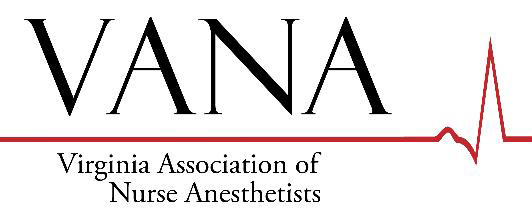What is a CRNA?
Certified Registered Nurse Anesthetists (CRNAs)

Nurse anesthetists have been providing anesthesia to patients in the United States for more than 150 years.
Certified Registered Nurse Anesthetists (CRNAs) are advanced practice registered nurses who administer approximately 43 million anesthetics to patients each year. More than 1,460 nurse anesthetists and student nurse anesthetists are members of the Virginia Association of Nurse Anesthetists. Nationally, more than 50,000 nurse anesthetists and student nurse anesthestists are members of the American Association of Nurse Anesthetists (AANA).
In some states, CRNAs are the sole anesthesia professionals in nearly 100% of rural hospitals,ensuring patient access to obstetrical, surgical,trauma stabilization and pain management services.
CRNAs have been recognized Medicare Part B providers since 1986.
CRNAs work in every setting in which anesthesia is delivered, including hospitals, ambulatory surgical centers and physician offices.
Nurse anesthesia predominates in Veterans Hospitals and in the U.S. Armed Forces.
CRNA services include pre-anesthesia evaluation, administering the anesthetic, monitoring and interpreting the patient’s vital signs, and managing the patient throughout surgery.
Providing acute and chronic pain management services is within the professional scope ofpractice of CRNAs.
Historical Background
Nurse anesthetists were among the first specialty nurses to require continuing education. The recertification program for nurse anesthetist is called the Continued Professional Certification (CPC) Program, which is administered by the National Board of Certification and Recertification for Nurse Anesthetists (NBCRNA) and is based on eight-year periods comprised of two 4-year cycles. It officially began on August 1, 2016. In addition to practice and license requirements, the CPC Program includes four main components: 60 Class A CE credits or traditional continuing education credits; 40 Class B credits or professional development activities; completion of Core Modules in four content areas, including airway management technique, applied clinical pharmacology, human physiology and pathophysiology, and anesthesia equipment and technology (recommended but not required); and pass a comprehensive examination every eight years.
The first organized program in nurse anesthesia education was offered in 1909.
The American Association of Nurse Anesthetists (AANA) implemented a certification program in 1945 and instituted mandatory recertification in 1978. The first certification examination was administered in 1945 to 92 candidates.
In 1952, the AANA established a mechanism for accreditation of nurse anesthesia educational programs that has been recognized by the U.S. Department of Education since 1955.
Recently, the AANA and the School of Nurse Anesthesia, began offering an advanced pain management fellowship to prepare CRNAs with the skills necessary to meet the pain management needs of Americans with chronic pain. The Advanced Pain Management Certificate Program is accredited by the COA, and graduates are eligible to take a certification examination on Non-Surgical Pain Management offered by the National Board of Certification and Recertification for Nurse Anesthetists.
Education of Nurse Anesthetists:
The minimum education and experience required to become a Certified Registered Nurse Anesthetist (CRNA) include:
- A baccalaureate or graduate degree in nursing or other appropriate major.
- An unencumbered license as a registered professional nurse and/or APRN in the United States or its territories.
- A minimum of one year full-time work experience, or its part-time equivalent, as a registered nurse in a critical care setting. The average experience of RNs entering nurse anesthesia educational programs is 2.9 years.
- Graduation with a minimum of a master’s degree from a nurse anesthesia educational program accredited by the Council on Accreditation of Nurse Anesthesia Educational Programs (COA). As of August 2017, there were 120 accredited nurse anesthesia programs in the United States using more than 2,200 active clinical sites; 62 nurse anesthesia programs are approved to award doctoral degrees for entry into practice.
- Nurse anesthesia programs range from 24-42 months, depending on university requirements. Programs include clinical settings and experiences. Graduates of nurse anesthesia educational programs have an average of 8,636 hours of clinical experience.
- It takes a minimum of 7-8.5 calendar years of education and experience to prepare a CRNA.
- More than 2,400 student registered nurse anesthetists graduate each year and go on to pass the National Certification Examination to become CRNAs.
- In 1990, the U.S. Department of Health and Human Services published findings indicating a growing need for additional nurse anesthetists. The present day workforce numbers more than 52,000 CRNAs.
Donate to the CRNA-PAC Today!
Be a voice for Virginia CRNAs and for your future and donate to the PAC! The CRNA-PAC provides financial support to candidates seeking election to the Virginia House of Delegates and the Virginia Senate. Learn more and donate today!

